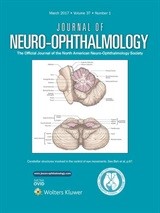Background: The King-Devick (K-D) test of rapid number naming is a reliable visual performance measure that is a sensitive sideline indicator of concussion when time scores worsen (lengthen) from preseason baseline. Within cohorts of youth athletes <18 years old, baseline K-D times become faster with increasing age. We determined the relation of rapid number-naming time scores on the K-D test to electronic measurements of saccade performance during preseason baseline assessments in a collegiate ice hockey team cohort. Within this group of young adult athletes, we also sought to examine the potential role for player age in determining baseline scores.
Methods: Athletes from a collegiate ice hockey team received preseason baseline testing as part of an ongoing study of rapid rink-side performance measures for concussion. These included the K-D test (spiral-bound cards and tablet computer versions). Participants also performed a laboratory-based version of the K-D test with simultaneous infrared-based video-oculographic recordings using an EyeLink 1000+. This allowed measurement of the temporal and spatial characteristics of eye movements, including saccadic velocity, duration, and intersaccadic interval (ISI).
Results: Among 13 male athletes, aged 18-23 years (mean 20.5 +/- 1.6 years), prolongation of the ISI (a combined measure of saccade latency and fixation duration) was the measure most associated with slower baseline time scores for the EyeLink-paired K-D (mean 38.2 +/- 6.2 seconds, r = 0.88 [95% CI 0.63-0.96], P = 0.0001), the K-D spiral-bound cards (36.6 +/- 5.9 seconds, r = 0.60 [95% CI 0.08-0.87], P = 0.03), and K-D computerized tablet version (39.1 +/- 5.4 seconds, r = 0.79 [95% CI 0.42-0.93], P = 0.001). In this cohort, older age was a predictor of longer (worse) K-D baseline time performance (age vs EyeLink-paired K-D: r = 0.70 [95% CI 0.24-0.90], P = 0.008; age vs K-D spiral-bound cards: r = 0.57 [95% CI 0.03-0.85], P = 0.04; age vs K-D tablet version: r = 0.59 [95% CI 0.06-0.86], P = 0.03) as well as prolonged ISI (r = 0.62 [95% CI 0.11-0.87], P = 0.02). Slower baseline K-D times were not associated with greater numbers of reported prior concussions.
Conclusions: Rapid number-naming performance using the K-D at preseason baseline in this small cohort of collegiate ice hockey players is best correlated with ISI among eye movement-recording measures. Baseline K-D scores notably worsened with increasing age, but not with numbers of prior concussions in this small cohort. While these findings require further investigation by larger studies of contact and noncontact sports athletes, they suggest that duration of contact sports exposure may influence preseason test performance.
Summary Points:
- Inter-saccadic intervals (ISI) time represents a combined measure of saccade latency and fixation duration.
- ISI in this cohort was associated with slower baseline K-D scores.
In this cohort age was associated with slower baseline K-D scores and may suggest that duration of contact sports exposure may influence preseason performance therefore highlights the importance of establishing an individual baseline and not using normative data for comparison.

